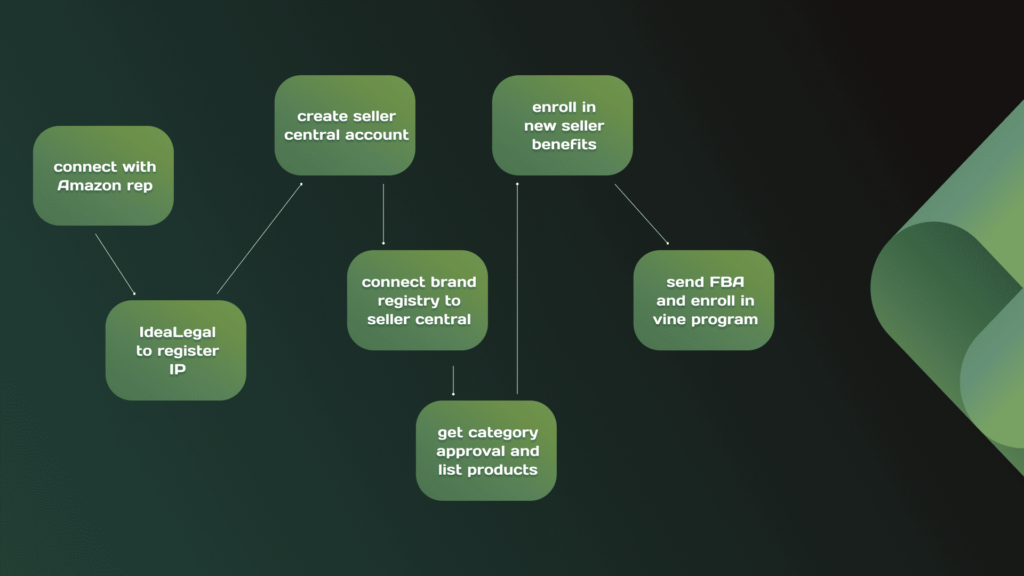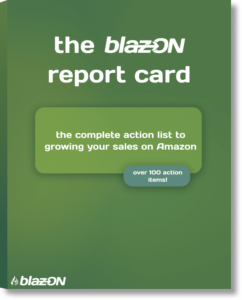Amazon is a vital sales channel to over 1.5 million ecommerce brands. With over 220 million Amazon Prime subscribers alone, the platform gives brands access to a customer base that can dramatically increase revenue and drive growth.
We’ve seen it hundreds of times over—brands list their products on Amazon and see massive growth. But getting set up can be a confusing and frustrating process. Luckily, we’re here to help.
Our account managers have a wealth of knowledge and experience in helping brands get set up on Amazon. We can guide you through the process and ensure the experience is painless.
Additionally, our agency has connections with internal Amazon teams, which gives our clients to resources and programs not available to all sellers. These exclusive connections allow us to troubleshoot issues and expedite issues that otherwise might drag on and slow business down.
While it’s true that you don’t need an agency or internal Amazon representatives to start selling on Amazon, they do make the process a whole lot easier. Here are just some of the things that you’ll need to consider when registering your own Seller Account:

Not only do you need to apply for a seller account and get verified (you’ll need basic business information), but some categories are gated are require applications and certifications to sell products. Navigating these applications can be difficult and confusing unless you have someone who knows the platform and how to navigate the requirements.

Every selling platform is different, and Amazon is no exception. Listing products on Amazon requires specific knowledge of how Amazon structures their catalog and manages their warehouses. And the listing feeds Amazon uses can be extremely temperamental and troublesome.

Amazon’s algorithm requires sellers to be very competitive to stay relevant. If your listings are not optimized for search and conversion, they can be lost among the other 350 million products on the platform. This includes knowing what images, titles, sales copy, and A+ content to utilize.

We’ve never seen an account that doesn’t have problems. Amazon will pull down listings, flag or penalize your account, and can even shut down your account entirely. Overcoming these obstacles is not easy. But it’s easier when you know how to get information from and work with the support team.
We have seen brands manage their own accounts successfully, but very commonly, it requires an employee in-house to spend large amounts of time working inside the Amazon account. Many of our sellers save enough money from the time they recover for their company alone, not to mention the amount of money the they make in addition from working with experts.

And that’s just getting started. That doesn’t answer questions like:
These, among so many other questions are why having an expert in your corner can be vital to success on Amazon.
Seller Central is a whole world, with its own language and methods. While hiring an expert can seem like a cost, it’s really more of an investment.
Even once you get your listings set up and selling, there’s ongoing maintenance that needs to take place. While these tasks don’t take long for an experienced Amazon manager to handle, they can suck up a lot of unproductive time if you don’t know what you’re doing.
It’s not uncommon for products with no issues at all to suddenly become flagged by Amazon. Whether it’s a product category issue, a policy violation, or a negative customer experience, these issues can be an absolute headache.
Many sellers spend a massive, unnecessary amount of time resolving account and listing issues that never should have happened in the first place.
And all that time costs sellers. It costs sales, ranking, and efforts that are better put toward something else.
Truth be told, though, not every seller is better off with an agency. Some are better off with a full-time Amazon manager, and others (with limited resources who are bootstrapping it) are better off DIYing their Amazon store.
And we’re not actually against that. We just want to make sure that sellers are aware of some of the challenges Amazon presents.
If you find yourself needing to go it on your own for a bit, we have some resources that we think you might find useful.
If you’re going to go it on your own, though, you’re going to want the BLAZON Report Card.
We consistently audit all of Amazon’s programs and tools for Sellers, and put them into a worksheet that anyone can download. If you want to succeed on Amazon, the BLAZON Report Card is going to give you more than enough to get sales moving.
We believe in it so much, we use it internally to grow accounts.

We mean it when we say that we don’t want to work with just anyone. We think it’s stupid for a brand to work with an agency if it isn’t what is best for the seller.
We encourage all sellers–new or seasoned to use the resources we have. If they find they can do it all on their own, great.
But if you find value in having a team of experts get you started on the right track, let us know. We’d love to help you out.
Design & Developed By Envawebstudios2025